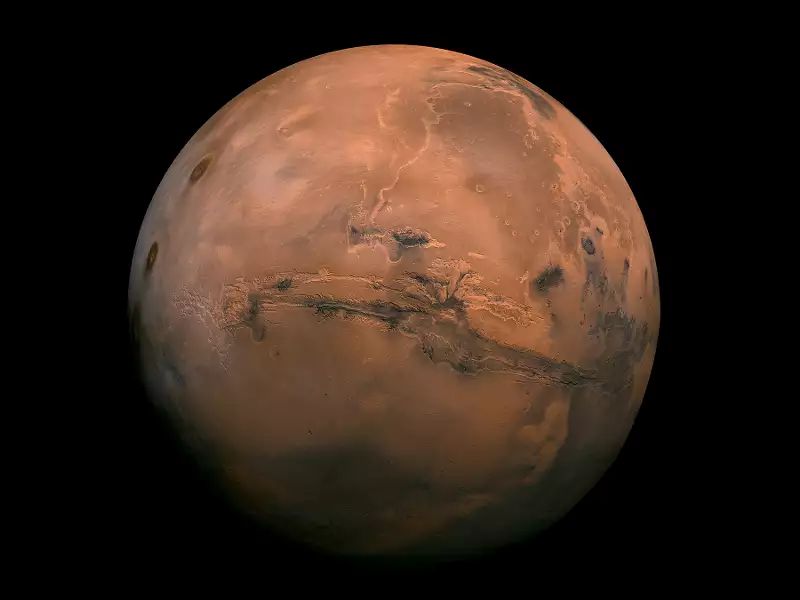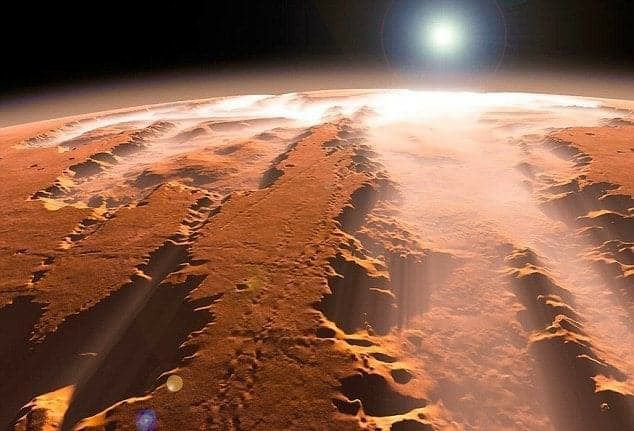Valles Marineris, one of the Solar System’s largest canyons, is found here.
This is Valles Marineris, and it is one of the largest canyons in the Solar System. It surpasses the Grand Canyon in depth, and its length spans the United States from coast to coast.
Valles Marineris, the colossal canyon on Mars, stretches across the planet’s surface for over 3,000 kilometers. It reaches widths of up to 600 kilometers and plunges to depths of 8 kilometers. In comparison, Earth’s Grand Canyon in Arizona, USA, is 800 kilometers long, 30 kilometers wide, and 1.8 kilometers deep. The formation process of Valles Marineris remains a mystery, although a prominent hypothesis suggests that it originated billions of years ago as a fissure during the planet’s cooling phase.
In recent times, scientists have identified several geological processes that have shaped the canyon. This includes erosion by wind and water, landslides, and volcanic activity. These forces have contributed to the dramatic cliffs, mesas, and valleys that characterize Valles Marineris.
The mosaic image presented here is a composite of over 100 individual images of Mars captured by the Viking Orbiters in the 1970s. These spacecraft played a crucial role in our initial exploration and understanding of the Red Planet. Their images provided valuable insights into the topography and geological features of Mars, including the awe-inspiring Valles Marineris.
As our understanding of Mars continues to advance, future missions and research will shed further light on the origin and evolution of this remarkable canyon. Valles Marineris stands as a testament to the geological wonders that exist beyond our home planet, offering us a glimpse into the intriguing mysteries of the Martian landscape.
Hits: 0










